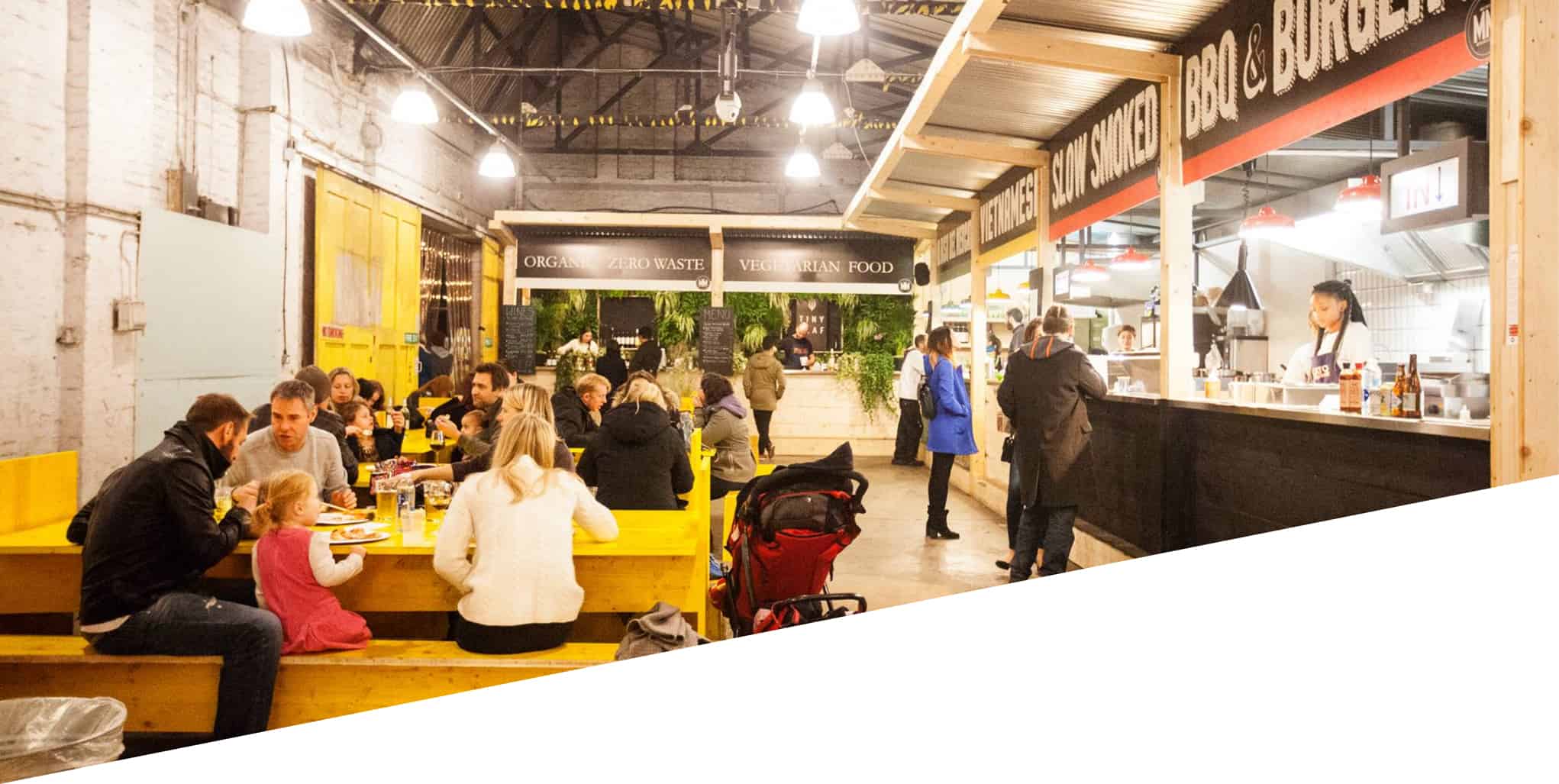Part Two – Meanwhile and Temporary uses of space
Published: 29.05.20
The term “Meanwhile Use” has come to the fore relatively recently. It represents a range of strategies that can be put into place in order to make under-utilised spaces and places become productive, both in an economic and social sense. Meanwhile uses are often employed as a precursor for regeneration of a site, or a wider area.
The types of uses are naturally varied, including; entertainment, arts and culture and restaurants, as well as commercial endeavours. Many people will have attended a pop-up bar, art exhibition or store. They may have even thought, what a great use of space.
It seems that space in town centres may become more readily available once we emerge from the current pandemic. Commercial rents are often prohibitive of experimentation in urban spaces, affordability will clearly improve the prospects of developers rebuilding and reanimating our town centres. Planning and Licensing can support such activities and uses. Private and public landowners, as well as planners, are able to collaborate in identifying and facilitating the delivery of meanwhile spaces.
We would point to Glasgow’s very successful Stalled Spaces that has “helped deliver over 100 projects that have successfully brought over 25ha of vacant, under-utilised, or stalled sites under temporary community use”. Some of the types of uses that have been supported include; temporary sculptures, wildlife and gardens, exhibition spaces, and various other innovative uses of space.
A great example in London, is Peckham Levels in South London, a repurposed car park that is used for temporary events including art and culture – with the ever-popular Frank’s Bar on the roof top. Perhaps we will see other similar initiatives popping up in the near future.
Just a reminder: planning permission for a temporary use of space, for not more than 28 days in total, in any calendar year, is permitted development. Permission would be required for longer periods. There are restrictions in this regard, and we would advise a discussion before launching into something.
Permitted Changes of Use:
The high street has undergone dramatic changes in consumer trends in recent memory. Permitted development rights allow for flexibility in order to accommodate a range of uses and encourage diversity in commercial operations. Flexibility is seen as a necessity in achieving successfully town centres.
Class D (shops, financial, cafes, takeaways, etc to temporary flexible use) permits change of use for up to 3 years on a temporary basis. These include…
Uses falling within:
- Class A1 (shops)
- Class A2 (financial and professional services),
- Class A3 (restaurants and cafes)
- Class A5 (hot food takeaways)
- Class B1 (business)
- Class D1 (non-residential institutions)
- Class D2 (assembly and leisure) and,
- Betting offices or pay day loan shops
Flexible use falling within:
- Class A1 (shops)
- Class A2 (financial and professional services)
- Class A3 (restaurants and cafes)
- Class B1 (business)
- Class D1(a) (the provision of any medical or health services except the use of premises attached to the residence of the consultant or practitioner)
- Class D1(d) (the display of works of art (otherwise than for sale or hire)
- Class D1(e) (museum)
- Class D1(f) (public library or public reading room) or,
- Class D1(g) (public hall or exhibition hall)
Restrictions and Conditions:
The development is not permitted if;
- The floorspace exceeds 150sqm
- The site was permitted by virtue of Class D
- The site is a military explosives storage area, is part of or is a safety hazard area and is a listed building or scheduled monument.
The following conditions are required to be met in order for the change of use to be permitted;
- The developer must notify the LPA, including the date and the uses, prior the use beginning
- The site can only be in one of the use classes as specified
- The lawful use remains the original use, prior to the use of the flexible use right and the site will revert back once the 3-year period has ended.
Our conclusions:
There is a positive attitude to Meanwhile Uses in policy circles, we consider – if fostered correctly – “this could be an invaluable method of bringing people to town centres and urban spaces.”
This article opens up options and provides a certain sense of freedom, albeit only for three years. Understanding that this is available can be key in securing a new tenant on a temporary basis.
We think this is an invaluable tool to have in your pocket, both if you’re looking for premises or a tenant. Permission for permanent changes of use can be sought during the temporary use.
Our team of experts are always happy to take a look at sites and give constructive feedback. Contact a member of our team today on; 020 7993 4539.


